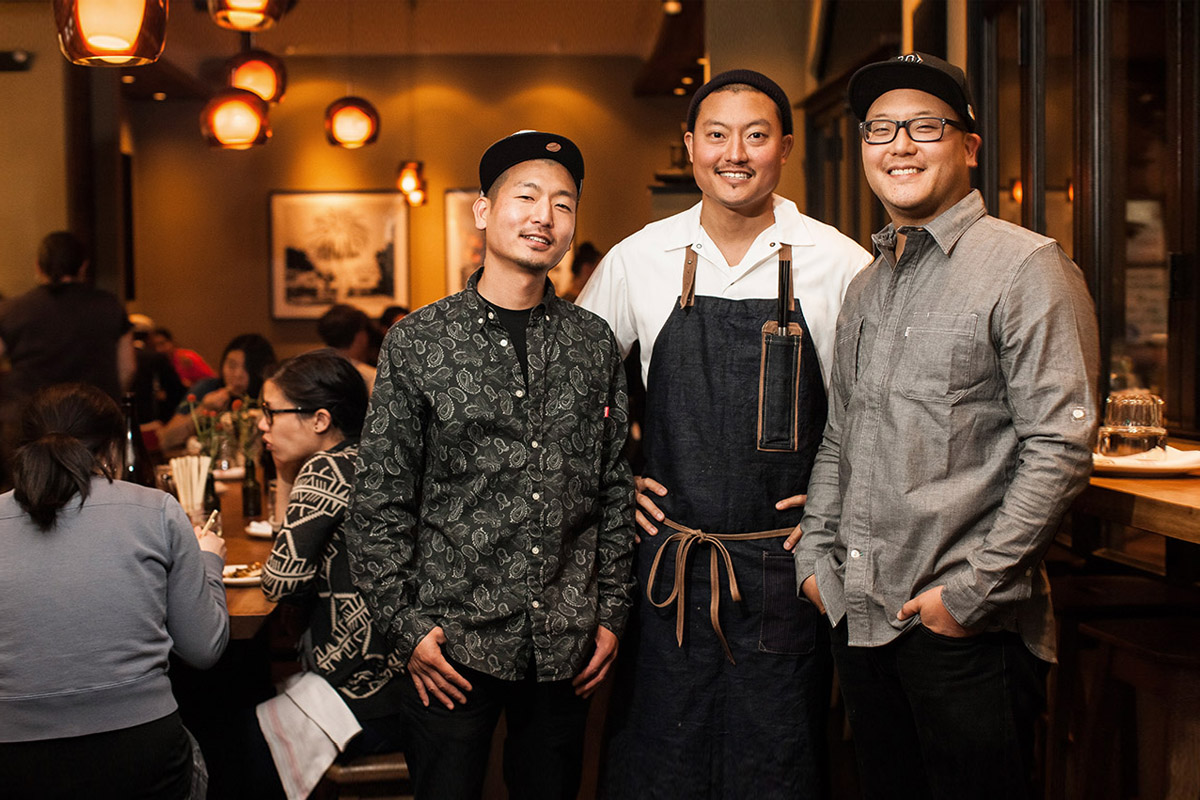With star chefs like David Chang and Roy Choi in the limelight, it seems like North America was never short of awe-inspiring Korean food. But that’s actually been a fairly recent development. Chang’s celebrity status goes back to the launch of the original Momofuku Noodle Bar in 2004, and Choi’s to the critical praise for the first Kogi truck in 2010. Before that, Korean food didn’t get the “hip” treatment it does today. Thanks to those two pioneers, and a young and successful “casual Korean” movement that followed, we are now able to talk about a “Kimchi Belt” in Queens, and a plethora of new Korean food cookbooks.
San Francisco’s Namu Gaji is one of those restaurants that has roots in the first, lesser-acknowledged wave in the mid-2000s, and is only now starting to garner the attention it deserves. Founded by three Bostonian brothers, the Mission hotspot came to be known for its honest and seasonal food, featuring menu items like shiitake dumplings, soju Bloody Marys, and stone pot (the Korean answer to soul food—essentially rice and vegetables cooked in a, well, stone pot). The brothers own a farm within an hour’s distance in Sunol, CA, where they grow most of the produce and herbs for the restaurant with a method called Korean Natural Farming (which includes, but isn’t limited to, saying ‘yes’ to all good bacterias in the soil, and ‘no’ to pesticides and fossil fuels.) “Starting a farm wasn’t always the plan, but our approach has always been broad and holistic,” chef Dennis Lee says. “We have always been interested in learning and engaging the food system as a whole and growing something is an important part of that.”
Growing up, the Lee brothers were no strangers to the business of food: Their mother is a chef who owns a restaurant in Natick, MA, which they intend to take over when she retires. “My favorite thing about Korean food culture is how food is considered the best medicine, and every dish and beverage has an application that fits within season, weather, occasion, emotion, ailment and so on,” Lee asserts.
If one half of Namu Gaji is Korean, the other half is purely Californian—the brothers wouldn’t have it any other way. “California is definitely the melting pot, but in a more evolved way because it has had a lot of cultural heritage from many places, for a long time. It means generations of old Japanese, Chinese and now Korean, Filipino, Vietnamese,” says Lee. Needless to say, Korean tacos are readily available on the menu, as is a selection of West Coast wines.
Lee thinks the recent demand for high end Korean food was expected and long due. “In Korean food, flavors and textures are dynamic and appealing to cooks and tastemaker types. So it was natural that the food that people working in restaurants, from high-end to quick service, were enjoying would eventually make it mainstream,” he says. The foreseeable future holds three new Namu Gajis—two new locations in San Francisco and one in Jakarta. And while we wait for our next trip to San Francisco (or Jakarta, if we’re lucky), we will keep our eyes peeled for the restaurant’s famous kimchi, hitting the Whole Foods shelves soon.











